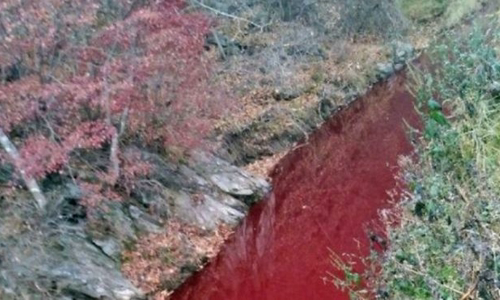South Korea The river near the Han-Tidal border turns red after blood from African carcasses of pigs infected here flows into the rain.
Korean officials over the weekend destroyed 47,000 pigs to prevent the spread of African swine fever (ASF). However, many carcasses were gathered in trucks at a disposal site near the inter-Korean border due to the lack of plastic containers to bury the swine.

The Imjin River on the inter-Korean border turns red due to pig blood infection Photo: Yeocheon Imjin River Civic Network
A subsequent heavy rain caused the pig's blood to flow from the trucks into a branch of the Imjin River and dyed the river water red.
Local authorities dismiss concerns that pig blood could spread ASF to other animals. They said the pigs were disinfected prior to destruction and are taking emergency measures to prevent contamination.
African pig cholera is highly contagious and pigs infected with ASF virus have a mortality rate of up to 100%. However, this virus is not dangerous to humans.
The ASF was recently introduced in South Korea and is thought to originate from wild pigs from North Korea crossing the Demilitarized Zone (DMZ) into South Korea.
North Korea detected the first case of swine fever in May and South Korea made efforts to prevent ASF from spreading across the border. The Korean military is entitled to kill any wild pig that crosses the DMZ.
Despite precautionary measures, South Korea recorded its first case of ASF on September 17 and so far has detected a total of 13 cases. Currently the country has about 6,700 pig farms.
Many Asian countries are also affected by the African swine cholera, including China, Vietnam and the Philippines. About 1.2 million pigs were culled in China alone.



 N�GhallachoirEll�
N�GhallachoirEll�







